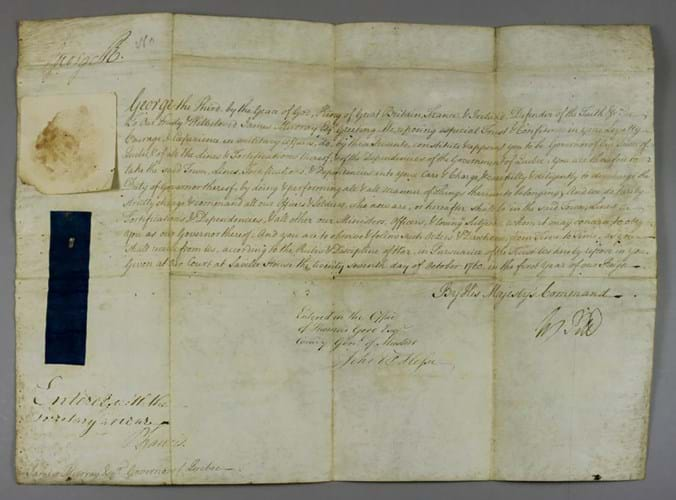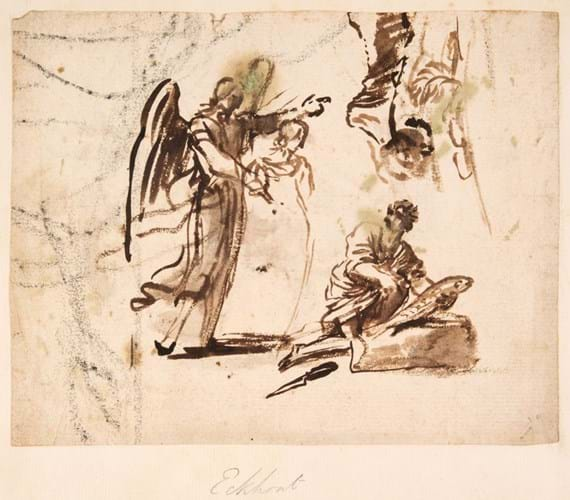1. Quebec commission – £7500

A commission signed by George III appointing James Murray as Governor of Quebec in Canada – £7500 at Canterbury Auction Galleries.
A royal commission signed by George III appointing James Murray “to be Governor of our Town of Quebec” appeared at Canterbury Auction Galleries on August 1.
Also signed by "His Majesty's Command, W. Pitt”, it dates from 1760, the year after General Wolfe defeated the French forces on the Plains of Abraham.
In the document Murray is also given command “of all the Lines and Fortifications thereof, and of the Dependencies of the Government of Quebec...”.
The manuscript drew dramatic competition against an estimate of £200-300, and it was eventually knocked down at £7500.
Murray remained as the military and civilian governor of Quebec for eight years. Opposing repressive measures against French Canadians he was later charged with partiality and, although exonerated, he left his post in 1768 and became governor of Minorca in 1774.
2. Old Master drawings – £13,000

One of a group of Old Master drawings that were offered as a single lot and made £13,000 at Dominic Winter.
A group of four Old Master drawings were offered as a single lot at Dominic Winter in South Cerney, Gloucestershire. They came to auction with provenance to a distinguished source – the collection of the art historian Michael Jaffé CBE (1923-1997) who was director of the Fitzwilliam Museum, Cambridge for 17 years from 1973 to 1990.
Catalogued simply as ‘Dutch school’, one of the pictures was a small sepia pen and ink sketch of Tobias and the Angel believed to date from the first half 17th century. The sheet, which measured 6.5 x 8.25in (16 x 21cm), had the name ‘Eckhout’ inscribed in pencil by a recent hand to the lower margin – presumably a reference to the Amsterdam artist and pupil of Rembrandt, Gerbrand van den Eeckhout (1621-1674).
Estimated at £300-400 at the auction on July 31, the lot drew considerable interest and was knocked down at £13,000.
3. 18th century medicine bottle – £3600
Another lot bringing strong bidding at Dominic Winter was an 18th century glass medicine bottle which was estimated at just £100-150.
The bottle is moulded with the words ‘Dr Lowthers Royal Specific Drops’ in relief to one side and ‘By The Kings Patent Nov 1757’ to the other.
William Lowther’s medicines were produced from the mid-18th century until around the 1780s, promising to cure various sorts of afflictions – including fits, nervous disorders, hysterics and wind.
One advert in The Whitehall Evening Post or London Intelligencer in 1758 describes how a client from Clapham with “a most violent windy disorder” could not be helped by “two eminent physicians…until he took Dr. Lowther’s Powders and Drops, the joint use of which in a short time entirely remov’d his complaints”.
The bottle sold in the auction on July 30 for £3600.
4. Glass engraving of Nelson’s coffin – £4400
This reverse engraving on glass shows an English school image of Admiral Lord Nelson lying in state. It was produced by looking-glass and barometer manufacturers of Stampa & Son of Leather Lane, London and was released in March 1806, five months after Nelson died at the Battle of Trafalgar.
Nelson's body had been brought home in the Victory and lay in state in the painted hall at Greenwich Hospital for three days from January 5-7, 1806. More than 30,000 people passed through to view the coffin.
The 9.75 x 14.25in (25 x 36cm) glass picture may well give an accurate representation of third day of the scene. While other known prints of the event give a wider view, this depiction is rather more ‘close up’.
It appeared at Keys of Aylsham on July 29 with a £150-200 estimate and sold at £4400 – a significant increase on the £720 it had fetched at Lyon & Turnbull in July 2008.
5. Greyhound racing ephemera – £720

A collection of greyhound racing ephemera including a programme for The Grey Hound Derby at White City, London in 1928 – £720 at Franklin Browns.
A collection of greyhound racing ephemera including a programme for The Greyhound Derby at White City, London in 1928 sold for £720 at Franklin Browns in Edinburgh on August 1. The lot was estimated at just £20-40.
Alongside the programme were two newspaper pages recording the event – the Sports Pictures and Football Mirror showing the owner and trainer of the winner (the Scottish dog Boher Ash) and also Sporting Life.
This particular race was the second greyhound derby to be held at the White City Stadium after the venue held its first dog race in June 1927. It would later hold greyhound races on a regular basis, attracting huge crowds (the 1939 English Greyhound Derby final attracted 92,000 spectators for example).
For the 1928 final, the prize money was increased significantly to £1500 and a gold cup was presented to the winning trainer and owner.








